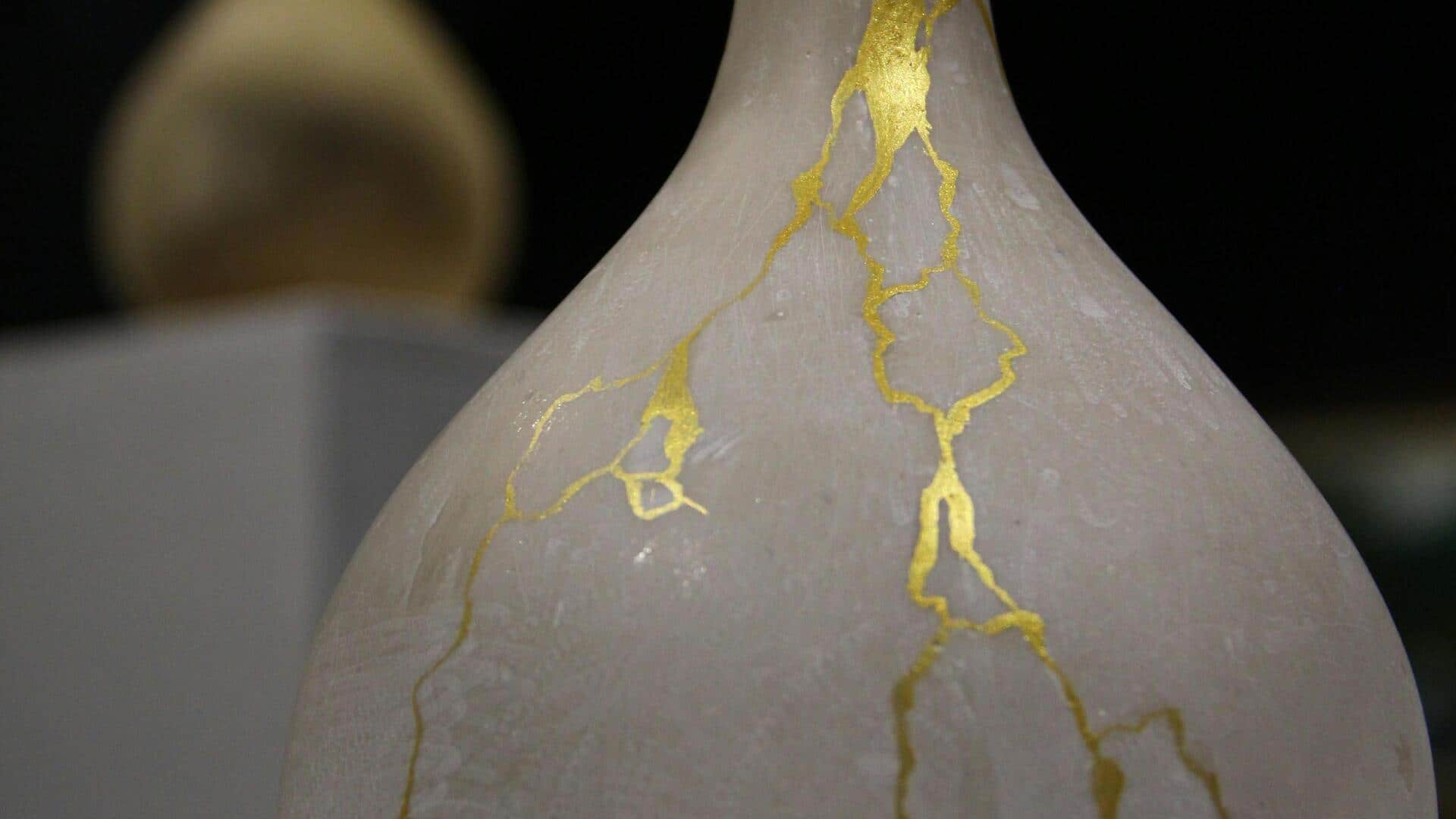
Kintsugi: The Japanese art of turning cracks into gold
What's the story
Kintsugi, the Japanese art of repairing broken pottery with lacquer mixed with powdered gold, silver, or platinum, is a beautiful metaphor for embracing flaws and imperfections. This centuries-old practice not only restores the functionality of an object but also enhances its beauty by highlighting the cracks. Kintsugi teaches us to appreciate the history and uniqueness of each piece, rather than hiding its flaws. Here are five interesting facts about this fascinating art form.
#1
Origins in the Muromachi period
Kintsugi originated during Japan's Muromachi period (14th-16th centuries). It is said that the practice began when a shogun sent a broken Chinese tea bowl back to China for repair. Upon receiving it, repaired with metal staples, he was disappointed and commissioned artisans to restore it using lacquer mixed with gold powder instead. This gave birth to kintsugi as an art form that celebrates, rather than conceals, damage.
#2
Philosophical roots in wabi-sabi
The philosophy behind kintsugi is deeply rooted in wabi-sabi, a Japanese worldview that finds beauty in imperfection and transience. Wabi-sabi encourages acceptance of change and the natural cycle of growth and decay. By highlighting cracks instead of hiding them, kintsugi embodies this philosophy by transforming brokenness into something uniquely beautiful.
#3
Techniques involved in Kintsugi
Kintsugi involves several meticulous steps to ensure a piece is restored beautifully and durably. First, artisans clean the broken pieces and use a special lacquer to bond them together. Then, they apply powdered gold or other metals along the cracks with precision tools like brushes or tweezers. This process requires patience and skill to achieve a seamless blend between restoration and artistic expression.
#4
Modern interpretations of Kintsugi
In recent years, kintsugi has inspired contemporary artists worldwide who explore its themes beyond traditional pottery restoration. Some use it metaphorically in their work to address personal or societal issues related to loss, healing, resilience, and acceptance. Others incorporate elements of kintsugi into fashion design or interior decor as a symbol of strength through vulnerability.
#5
Benefits beyond aesthetics
Engaging with kintsugi can have several benefits beyond the aesthetic appeal. It encourages mindfulness by requiring focused attention during the repair process. It also promotes sustainability by advocating for the reuse of broken items instead of discarding them. This practice fosters a deeper connection to objects by preserving their history and character through skilled restoration efforts.